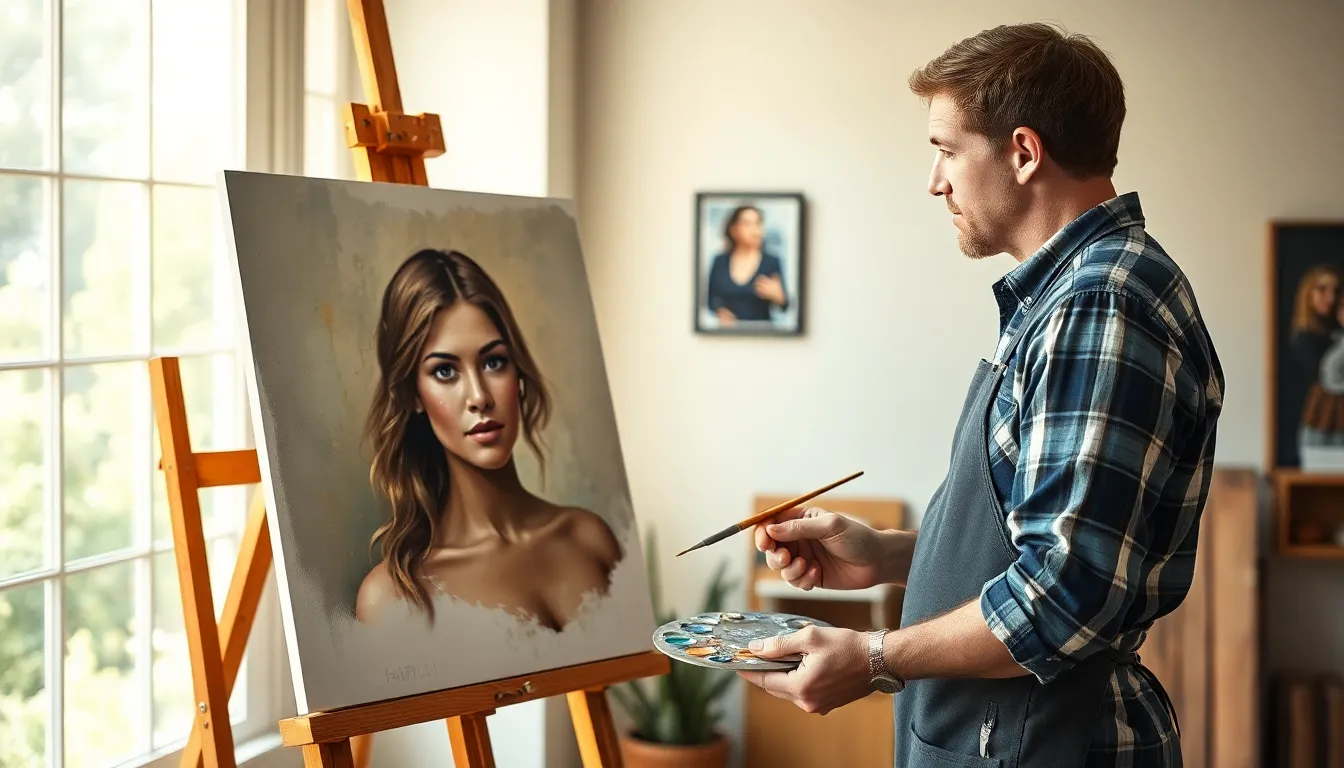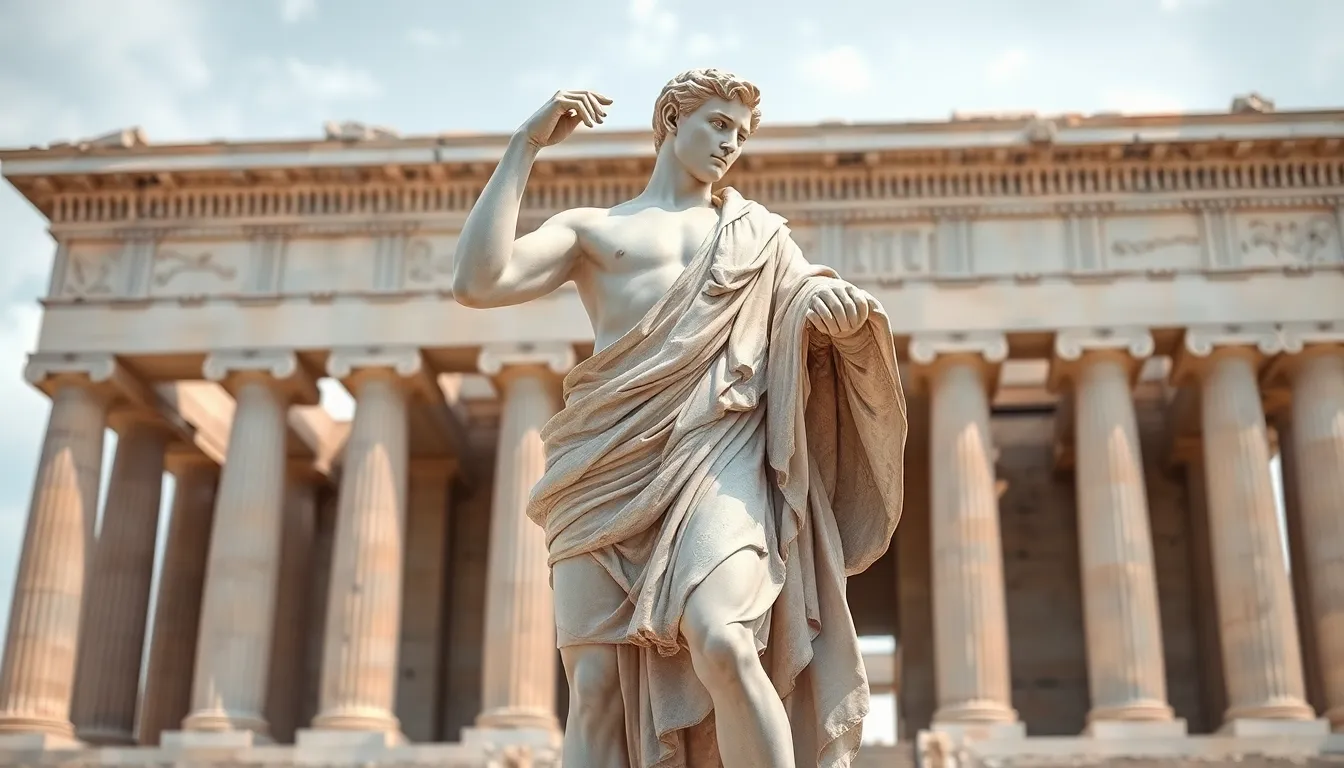Classical realism art is like that timeless classic film you can’t help but watch again. It’s the movement that brings together the precision of technique and the beauty of human experience, capturing life in all its glorious detail. Imagine walking into a gallery and feeling as if you’ve stepped into a moment frozen in time, where every brushstroke tells a story.
This art form isn’t just about pretty pictures; it’s a celebration of skill, emotion, and the sheer joy of seeing the world through a masterful lens. From the lush landscapes to the intricate portraits, classical realism invites viewers to appreciate the beauty in everyday life. So grab your beret and let’s dive into the captivating world of classical realism, where art isn’t just seen, it’s experienced.
Table of Contents
ToggleOverview of Classical Realism Art
Classical realism art emphasizes technical skill combined with emotional depth. Artists in this movement strive for accuracy in depicting the human form and nature, drawing inspiration from classical traditions. This art form values the representation of everyday life, presenting scenes and emotions that resonate with viewers.
Detail plays an essential role in classical realism. Each brushstroke contributes to an overall narrative, revealing stories through careful observation. Artists often utilize light and shadow to enhance three-dimensionality, creating lifelike images.
Influential figures such as Andrew Wyeth and John Singer Sargent showcase the principles of classical realism. Their works often reflect introspective themes, exploring the human condition and natural beauty. Techniques like glazing and layering enhance depth and richness in color, heightening the visual experience.
Emotional resonance marks this art form, inviting viewers to connect with the subjects depicted. Classical realism art recognizes the beauty in the mundane, elevating simple moments to profound experiences. This recognition fosters a deeper appreciation for the skill and emotion imbued in each work.
Although modern art movements have emerged, classical realism remains significant in contemporary art. Artists returning to classical techniques continue challenging and engaging audiences, ensuring the movement’s relevance. The enduring appeal stems from the celebration of life and the human spirit, making classical realism an everlasting journey through art.
Historical Context

Classical realism art encapsulates a significant movement rooted in rich historical traditions. Artists sought to convey the human experience through technical excellence and emotional narratives.
Origins of the Movement
The origins of classical realism trace back to the Renaissance era, where artists embraced humanism and naturalism. Influences from ancient Greek and Roman art played a vital role in shaping this style. Techniques evolved as artists prioritized accurate depictions of anatomy, light, and shadow. The 19th century marked a resurgence, as painters aimed to capture reality amidst changing social landscapes. Movements like the academic art schools nurtured these principles, emphasizing meticulous craftsmanship and the beauty of everyday life. Classical realism emerged firmly as a response to the evolving world while remaining anchored in traditional techniques.
Key Artists and Their Contributions
Key artists significantly shaped the landscape of classical realism. Andrew Wyeth, known for his intimate portrayals of rural life, utilized light and shadow to enhance emotional depth. His attention to detail invites viewers into personal narratives. John Singer Sargent, another prominent figure, excelled in portraiture, capturing the essence of his subjects with remarkable precision. His brushwork and mastery of color brought life to every canvas. Other notable artists, such as Joaquín Sorolla and Berthe Morisot, contributed unique perspectives, merging classical techniques with personal expression. Collectively, these artists reinforced the movement’s enduring legacy, proving its relevance across generations.
Key Characteristics of Classical Realism Art
Classical realism art embodies a commitment to accuracy and emotional depth, showcasing essential characteristics that define its unique appeal.
Technique and Medium
Artists utilize oil painting predominantly in classical realism, enabling rich colors and detailed textures. Glazing techniques enhance transparency and depth, allowing light to interact with layers of paint. Brushwork varies, ranging from precise strokes for fine details to broader strokes for backgrounds. Many artists employ traditional methods like sight-size technique, ensuring anatomical correctness in figures. Canvas and wood panels serve as common surfaces, supporting the immersive quality of the artwork. Artists often blend classical techniques with contemporary practices, continually evolving the medium’s use while maintaining fidelity to the movement’s roots.
Themes and Subjects
Everyday life serves as a primary theme in classical realism, often portraying familiar scenes and human experiences. Portraiture plays a significant role, capturing individual emotions and personalities. Nature is frequently depicted alongside human figures, highlighting the connection between humanity and the environment. Various social contexts also emerge, reflecting personal stories and broader cultural narratives. Artists address introspective themes, exploring the human condition through still lives and landscapes. This artistic focus cultivates a sense of familiarity, inviting viewers to connect with the narratives presented.
The Impact of Classical Realism Art
Classical realism art profoundly influences both the art world and cultural landscapes. Its techniques and emotional depth resonate with contemporary creators, inspiring a return to traditional methods.
Influence on Modern Art
Contemporary artists draw from classical realism’s principles, merging them with modern aesthetics. Artists often prioritize detailed representation and narrative depth, imbuing their work with timeless themes. The techniques of glazing and layering, common in classical realism, continue to enhance visual experiences in modern artworks. Young talents explore these methods to evoke emotional responses, reflecting the human condition’s complexity. By bridging tradition and innovation, classical realism remains a vital source of inspiration for current and future artists.
Cultural Significance
Classical realism art captures the essence of everyday life and human experience, connecting deeply with diverse audiences. It highlights cultural heritage, encouraging appreciation for craft and precision in artistic expression. Often, artworks convey personal narratives that resonate universally, fostering empathy among viewers. This movement champions the beauty of the mundane, elevating ordinary moments into shared experiences. Engagement with classical realism fosters a greater understanding of emotional depth across cultures, reinforcing its significance in a rapidly changing world.
Classical realism art stands as a testament to the enduring power of technical skill and emotional depth. Its ability to capture the nuances of everyday life and elevate them into profound experiences resonates deeply with audiences. The movement’s commitment to accuracy and detail invites viewers to engage with art on a personal level, fostering connections that transcend time.
As contemporary artists continue to explore classical techniques, the legacy of classical realism remains vibrant. This art form not only honors tradition but also challenges modern perceptions of beauty and narrative. By celebrating the human spirit and the beauty found in the mundane, classical realism continues to inspire and captivate, ensuring its place in the rich tapestry of art history.





